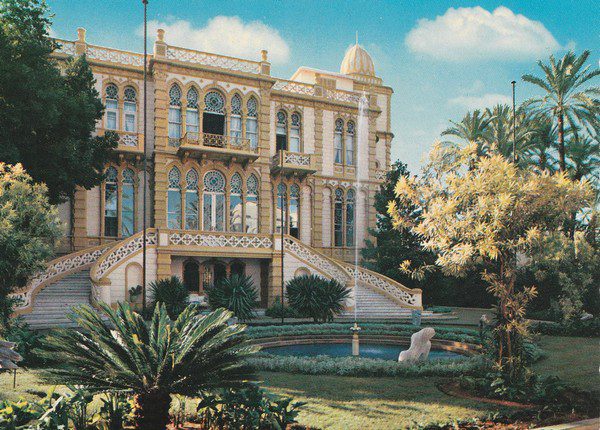 Modern Art Museums in WANA
Modern Art Museums in WANA


The histories of the region’s modern art museums are not widely known. Whilst there are many plausible explanations for this, particularly two issues should be underlined. First, throughout the region, archaeological memory has been given a priority. This is evident both historically and in the present moment. The first museums in the region were all archaeological of nature; think of the Egyptian Museum in Cairo (1835) or the Iraqi Museum in Baghdad (1926). Nowadays archaeological memory is still celebrated as these institutions are prioritised in terms of funding, for instance. Second, whilst the Western media has focused on scrutinising the ‘iconic’ museum projects of the Gulf; the kinds of Louvre Abu Dhabi and Doha’s Museum of Islamic Art, the histories of the region’s other museums, particularly those relating to modern art, are largely overlooked. The lack of attention and perhaps also interest towards the region’s modern art museums leads easily to the false beliefs that such institutions are either practically nonexistent in the region or very recent. This is far from the truth as the history of the region’s modern art museums dates back to the first half of the twentieth century.
The purpose of this overview is to trace the region’s modern art museum histories. In other words, what was established, when and where. Before we dig deeper into these institutions, it is useful to remind ourselves what we are actually talking about when we use the term ‘modern art’. Al-fann al-hadith, or ‘modern art’, refers to the art form practised since the end of the nineteenth century in the region, deriving from the adoption of Western art. It is useful to note that when it comes to the ‘introduction’ of modern art, there are vast regional differences. Whilst in Lebanon the modern art period began during the last quarter of the nineteenth century, in the Gulf this happened closer to the 1970s. The rest of the region sits somewhere between those decades. Eventually, with the introduction and adoption of modern art came also the institutions, including the region’s first museums of modern art. Let’s look at them now.
Egypt
The region’s first modern art museum was founded in Cairo. The story of the Museum of Modern Art dates back to the beginning of 1920s, when Mohamed Mahmoud Khalil, the first Egyptian collector of modern art, started to make acquisitions for the museum in 1925 with the resources allocated to him by the Ministry of Education. The museum’s collection consisted mainly of Egyptian and French artworks. Initially, the museum was located in several places: Tigrane Palace in 1928, Musayri Palace in 1930, Bustan Palace in 1936, Zughayb Palace in 1939. In 1963, the museum was shut down and in 1966 the modern Egyptian works were moved to a villa in the Dokki neighbourhood. Eventually, the Museum of Modern Egyptian Art (Mathaf al-fann al-misri al-hadith) opened to the public in 1991.
Lebanon
Despite the lobbying efforts of various artists and intellectuals since the 1940s, Lebanon, still, to date, does not have a public museum of modern and contemporary art. The void left by the Lebanese government has been filled by numerous private initiatives, the earliest being the 1961 opened Nicolas Ibrahim Sursock Museum with its modern art collection consisting mainly of Lebanese artists. Nicolas Sursock, an avid art collector and supporter of the arts, recognised the need for institutional support of artists in Lebanon, and left his mansion and art collection to the country as an art museum upon his death in 1952.
Syria
Similarly to Lebanon, there is no public museum of modern art in Syria either. However, the Department of Modern Art at the National Museum in Damascus opened already in 1953. The current state of the department is unclear.
Iraq
The art scene was bustling in Baghdad and museums were no exception. The National Museum of Modern Art (Al-mathaf al-watani li-l-fann al-hadith) opened in 1962, whilst the project dated back to the previous decade, when the Baghdad municipality decided to establish a new building to host the city’s modern art collections which were sporadically shown in various locations including the Iraqi Museum. Museums were of interest for the Baath regime, too. The Museum of the Pioneers (Mathaf al-ruwwad) opened in 1980, whilst the Saddam Centre for the Arts, renamed the Iraqi Museum of Modern Art after 2003, was inaugurated in 1986.
Jordan
The 1980 established Jordanian National Gallery of Fine Arts is one of the region’s first pan-Arab modern art museums. Although the museum focuses on art from ‘developing countries’, in practice most of its collection is concentrated on art from the Arab and Islamic countries.
Later establishments
The later modern art museums in the region include the Sharjah Museum for Contemporary Arab Art (2001), the Kuwaiti Museum of Modern Art (2004), the Museum of Modern Art of Algiers (2007), Mathaf: Arab Museum of Modern Art (2010, although it was established privately in the 1990s), Barjeel Art Foundation (2010), the Mohammed VI Museum of Modern and Contemporary Art (2014) and le Musée d’Art contemporain africain Al-Maaden (2016), demonstrating an increased interest towards a regionally encompassing art collection instead of a mere national focus.
Header image: Musée Sursock.


 Modern Art Museums in WANA
Modern Art Museums in WANA 

